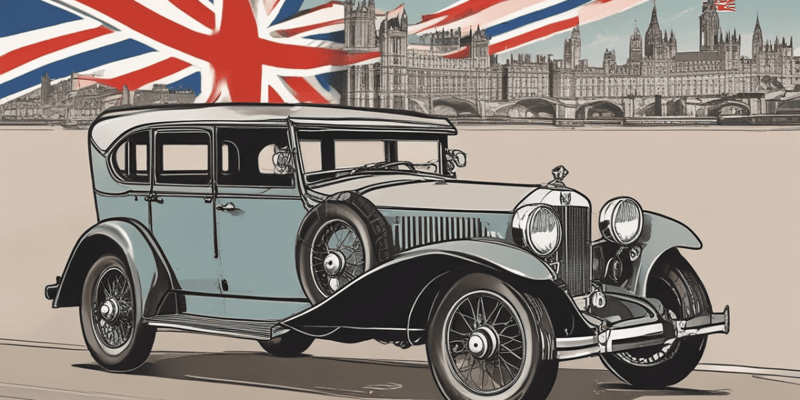8 Questions
Who were the two main groups that emerged in the British women's suffrage movement?
Suffragettes and Suffragists
Who were the leaders of the Suffragettes?
Emmeline and Christabel Pankhurst
Who was the leader of the Suffragists?
Millicent Fawcett
What organization did Emmeline Pankhurst co-found in 1903?
Women's Social and Political Union (WSPU)
What were some of the tactics used by the suffragettes movement?
Civil disobedience such as vandalism and arson
What were the tactics used by the Suffragists?
Peaceful methods such as lobbying, letter writing and meetings
What disruptive tactic did suffragettes use to draw attention to their campaign?
Disrupting public meetings
When was women's right to vote achieved in the UK?
1918
Study Notes
British Women's Suffrage Movement: Suffragettes, Suffragists, and Key Figures
The British women's suffrage movement, which fought for women's right to vote, saw the emergence of two main groups: the Suffragettes and the Suffragists. The Suffragettes, under the leadership of Emmeline and Christabel Pankhurst, were more aggressive in their tactics, while the Suffragists, led by Millicent Fawcett, focused on legal and constitutional strategies.
Key Figures
-
Emmeline Pankhurst: Co-founder of the Women's Social and Political Union (WSPU) in 1903, she was a prominent figure in the suffrage movement and advocated for direct action to pressure the government.
-
Christabel Pankhurst: Emmeline's daughter and co-founder of the WSPU, she was also a key figure in the movement and participated in various acts of civil disobedience, such as disrupting public meetings and boycotting the census.
-
Millicent Fawcett: Founder of the National Union of Women's Suffrage Societies, she was an influential figure in the suffrage movement and worked alongside her daughter, Essex, in their campaign for women's rights.
Tactics and Strategies
The suffrage movement employed various tactics and strategies to gain attention and support for their cause. Some of these tactics included:
-
Disrupting public meetings: Suffragettes disrupted public meetings and events to draw attention to their campaign for women's suffrage.
-
Boycotting the census: The WSPU encouraged women to boycott the census in 1901 as a way to protest against not being able to vote.
-
Direct action: The WSPU focused on direct and often illegal actions, such as cutting telephone wires, setting unoccupied churches on fire, breaking windows, throwing rocks, and engaging in hunger strikes.
-
Militant tactics: Emmeline Pankhurst and other suffragettes were inspired by the Militant Suffrage movement in the United States, which used more aggressive and radical tactics to fight for women's rights.
-
Transatlantic collaboration: British suffragettes collaborated with their counterparts in the United States, sharing tactics and strategies to increase the impact of their movements.
The British women's suffrage movement eventually succeeded in gaining support for women's right to vote, which was achieved in 1918 in the UK. The tactics and strategies employed by the suffragettes and suffragists, as well as the key figures who led the movement, played a crucial role in this accomplishment.
Test your knowledge about the British women's suffrage movement, including the key figures, tactics, and strategies employed by the Suffragettes and Suffragists in their fight for women's right to vote.
Make Your Own Quizzes and Flashcards
Convert your notes into interactive study material.




